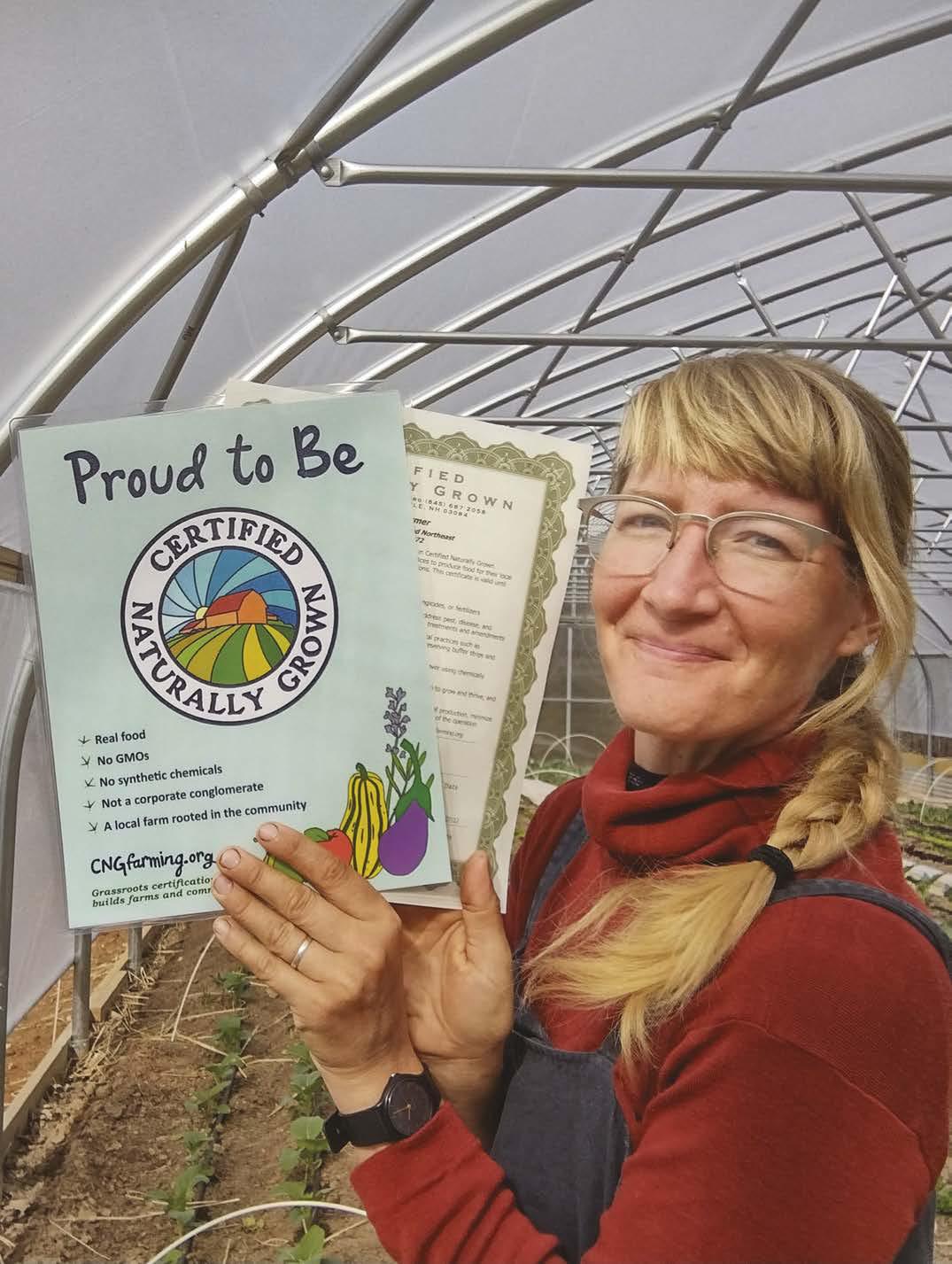
Across the world, trillions of honeybees are hard at work, pollinating vital crops and turning nectar into honey. In various locations near Wilmington, Delaware, more than a million of those bees return home to "microapiaries" under the care of Stephanie Grant.
"I am selective in my locations, as the properties cannot be treated with synthetic herbicides or pesticides," she says. "There needs to be an abundance of natural resources, including a variety of pollen and nectar sources, as well as a water source, and I need to ensure that the safety of the bees and people are always at the forefront. I believe we need to use nature and work with it, not against it." This belief system is what led Grant to pursue Certified Naturally Grown certification for her Sassy Bee Honey two years ago. Largely described as a grassroots alternative to the U.S. Department of Agriculture Certified Organic label, Certified Naturally Grown producers see it as that and more.
"I read the acronym somewhere online, and I did not know what it was, so I researched it," Grant says. "As I read, I thought it was completely in line with my current philosophy and many of the practices I already followed. I did have to make a few modifications to become certified, but they were changes that are for the betterment of the bees, so I was completely on board."
For beekeepers, USDA Certified Organic approval is difficult. To start, the National Organic Program doesn't have an apiculture standard, rather it relies on the livestock standards, a few items on the allowed synthetic-materials list, plus some "draft guidance" standards that have been issued but not made official by the National Organic Standards Board. Because bees can travel miles to forage, a USDA Certified Organic operation must prove their bees forage from plants not treated with prohibited materials in a 1.8-mile radius, which is difficult to come by.
This story is from the {{IssueName}} edition of {{MagazineName}}.
Start your 7-day Magzter GOLD free trial to access thousands of curated premium stories, and 9,000+ magazines and newspapers.
Already a subscriber ? Sign In
This story is from the {{IssueName}} edition of {{MagazineName}}.
Start your 7-day Magzter GOLD free trial to access thousands of curated premium stories, and 9,000+ magazines and newspapers.
Already a subscriber? Sign In

The RISE of Opportunist WEEDS
Be prepared to see increasing changes in weeds we fight, such as poison hemlock and poison ivy, and in the crops we grow.

LIVESTOCK Health
Prepare yourself for how to spot symptoms of illness in your farm animals so that you can get them help before it's too late.

CUT FLOWER Farming
If you're considering growing flowers for sale, brush up on these five key things to know before diving in.

WINTER Survival
Keep your land, animals and yourself in good shape this winter with this helpful advice.

COVERAGE CONCERNS
Avoid common insurance mistakes for rural and hobby farm businesses.

FARMER'S GUIDE Berries
Set the stage for tasty strawberries, blueberries and brambles with these soil-boosting garden tips.

Preconditioning CALVES
Follow our step-by-step guide to get more money for your calves.

Soil Conservation
Often, outside of having a specific problem that needs to be addressed, soil conservation isn't something every farmer readily thinks about. Yet conserving the soil should be at or near the top of every farmer owner or manager's list of concerns because absent the prevention of soil erosion, we have the opportunity for another dust bowl.

Year-Round Lettuce & Salad Mixes
It's easy to think of salad greens as just a spring- or fall-garden crop, but it's possible to enjoy freshly harvested lettuces, mustards and more from your own garden year-round.

Barn Improvements
Days are never long enough for a farmer. From dawn to well into the night, tasks arise that often require immediate action. Having to search for tools or equipment is an enormous time waster and incredibly frustrating when you can't find what you need, especially when you know you have it.